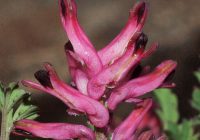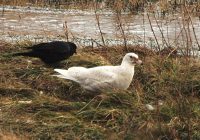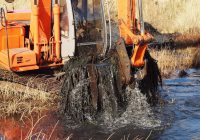Dr Phil Smith’s Wildlife Notes
April 2012
With drought conditions at last being officially acknowledged over most of lowland England, a return to more typical April weather was welcome. Even, so, with significant rainfall on only 11 days and none of the “torrential showers” widely forecast, the much depleted sand-dune water-table had risen by only about 10cm by the end of the month. My monitoring visits to Birkdale Green Beach produced a cumulative total of only 67 Natterjack spawn strings, compared with 89 in 2011 and 152 the year before. Both were extremely poor years for breeding and 2012 seems likely to follow that trend, despite attempts to dig more scrapes along the coast.
Persistent north and north-west winds for much of the month slowed bird migration. I didn’t hear a Willow Warbler until 10th when one was singing at Sands Lake That day, the high tide wader-roost on Ainsdale beach included 775 Sanderling and 135 Ringed Plover, soon to depart for the high Arctic, while the first Natterjack Toad of the year and a Jack Snipe were on the Green Beach. A large raptor hovering in the stiff onshore wind turned out to be just a Common Buzzard.
In recent years, the large flocks of Little Gulls that used to appear in mid-April at Seaforth Nature Reserve have become a distant memory. Hearing they were back, I couldn’t resist a visit on 23rd to see one of my favourite birds. About 60 of the little beauties were flying in front of the hide catching midges hatching from the freshwater pool. Many were in full summer-plumage with stunning pink-flushed underparts. Record numbers of Sandwich Terns were an additional attraction, around 260 being present that afternoon. By the end of the month, the Little Gulls had increased to a spectacular 150. Seaforth also reported its first Common Tern on 13th a Swift on 27th, rather later than usual, and a Spoonbill on 28th.
The Wildfowl & Wetlands Trust’s Martin Mere also provided great bird-watching, most notably a record count of 111 Avocets on 10th, a Common Crane from 22nd to 26th and a Wood Warbler on 28th. This beautiful songster used to be a regular passage migrant in our area and was a common breeder in the late 19th century. Now, The Birds of Lancashire and North Merseyside (2008) describes it as “on the verge of extinction” in the county. In common with the Nightingale and Cuckoo, it is one of the most rapidly declining British birds, seemingly due to problems in its African wintering quarters south of the Sahara.
Despite the cool weather, several insects appeared during the month, amongst the earliest being Vernal Mining Bees swarming around their nest holes at Hightown dunes on 1st. Also there were two Peacock butterflies and a Red Admiral fresh out of hibernation. By 12th, Speckled Woods were nectaring on Dandelions at Freshfield Dune Heath, while on 15th a male Orange Tip visited my garden for the first time. Being at Ainsdale on 21st, I decided to have a quick look round Pinfold Pond and was rewarded by finding ten Slender Ground-hoppers around its mossy edge. This was a new record for Ainsdale National Nature Reserve of an insect that I first recorded in April last year. Nearby were tiny beetles about 7mm long which I eventually identified as Elaphrus cupreus. Close-up photographs revealed an extraordinary pattern on the wing-cases which appeared to be studded with sapphires.
Botanical highlights of the month included a new colony of Shepherd’s-cress on the Rabbit-grazed acid grassland just inside Ainsdale NNR about 50m from the population Patricia Lockwood and I studied last year. The latter was thought to be the only site remaining in South Lancashire for this nationally declining annual. As I wanted to see it in flower, we also revisited the Spring Sedge that Mary Dean found in June last year on Freshfield Dune Heath Nature Reserve. It didn’t disappoint and we estimated at least 1800 plants.




